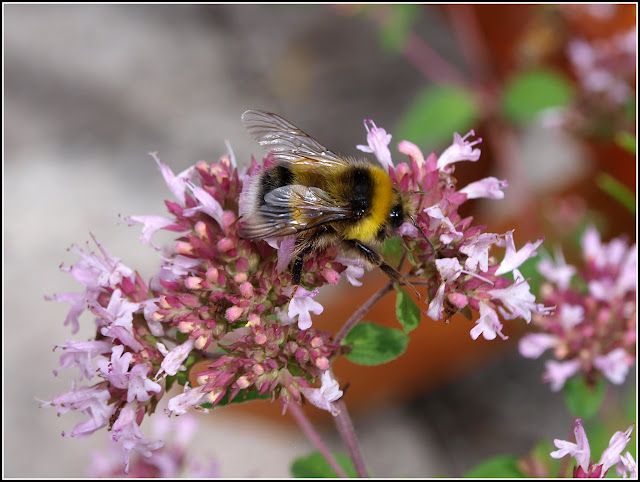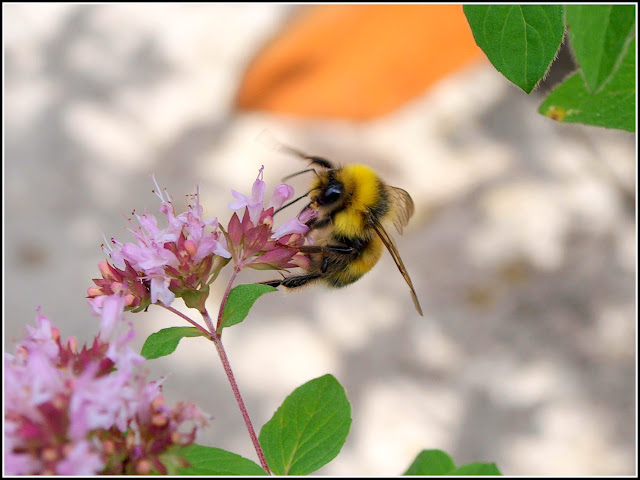Anyway, thinking positively, most of the plants are looking very healthy now, and the aphid problem seems to have disappeared completely. This little chap may have helped with that, though I would like it if he would invite the rest of his family to visit. They would have a Field Day with the blackfly on the nearby Runner Beans.
I had been worried that all the lush foliage on the chilli plants might mean that they would produce fewer flowers and hence fruit, but it seems I was wrong:
Some of the plants are laden with fruit like that unidentified one above, (that is the one I thought was going to be Cheiro Roxa but isn't) and the Cayenne and Ring of Fire:
 |
| Cayenne |
 |
| Ring of Fire |
Fortunately two of the three mentioned above are the ones I am growing mainly for use in the kitchen. They are the "boring" ones - ordinary red ones with nothing special about them. I would like to have quite a few fruits off them so that I can have a supply of them in the freezer to last until this time next year.
Some of the other, more exotic, ones are just producing their first fruit, and it will be touch and go whether they will ripen before the first frosts (especially since it currently looks as if the first frosts may arrive before the end of August!). This is "Aji Limon" (always one of the last to ripen) on the plant I kept from last year:
 |
| Aji Limon |
This is Caribbean Antillais, a Scotch Bonnet type:
 |
| Caribbean Antillais |
 |
| Bolivian Rainbow |
The Rocoto plant is getting big and straggly now.
 |
| Rocoto |
It has no fruits so far, but several really pretty flowers:
 |
| Rocoto |
Neither of my two Nosferatu plants has any flowers yet, but they probably win in the Foliage category. This is the normal type, with plain dark purple / black leaves:
 |
| Nosferatu |
And this is the one I have called "Nosferatu Green Leaf", whose leaves have less black and more green colour.
 |
| Nosferatu Green Leaf |
That one is grown from seeds sent to me by my friend Trevor, in Wales. His plant was the result of a chance cross-pollination between Cayenne and Nosferatu. The fruits it produced for him were long and slim like Cayenne, but dark black, ripening to red, like Nosferatu - really a very beautiful plant.
Both of the Nosferatus branched-out at an early stage, producing three stems, like this:
 |
| Nosferatu |
Actually, before we decide which one wins on foliage, look at this Calico one:
 |
| Calico |
The leaves are a mix of green, purple and cream, and the flowers are beautiful too:
 |
| Calico |
The prize for the tallest plant definitely goes to Brazilian Starfish, which is about four feet tall now:
 |
| Brazilian Starfish |
It has quite a few fruits on it, gradually developing their starfish shape:
 |
| Brazilian Starfish |
I have a number of quite small chilli plants - late-sown ones plus a couple of re-potted volunteers - and I have brought those ones indoors in the hope of giving them a boost. Our night-time temperatures have been ridiculously low recently (7 or 8 degrees several nights), so a spell indoors is probably going to be welcome.
Growing chillis outdoors in the UK is always a bit of a gamble, and success depends heavily on the weather, but unless we get an early Autumn, things are looking OK at this moment.













































